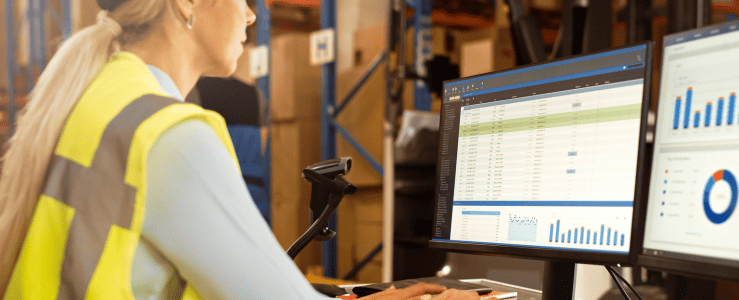Blog

How to Keep Up When Business Moves Faster than your ERP
ERPs of any make or model are not known for being agile or nimble. Especially the behemoth ERPs that million- and billion-dollar manufacturers run on, like SAP or Oracle. But the pace of business, the expectations of buyers, and the 24/7 nature of commerce means you need front-end solutions that reduce friction, delight customers and distributors, AND connect to your ERP. ERP modernization requires you to update your back-end systems and front-end solutions in parallel–never losing that single source of truth built inside your ERP.
ERP Modernization Builds on Decades of Investment
A vivid example of the struggles associated with ERP modernization can be found in SAP’s ECC-to-S/4HANA transition. SAP unveiled S/4HANA in 2015 and cited a 2025 support deadline. That’s since been extended to 2027 but with just 5 years left to that extended deadline, Gartner estimates that just 26% of existing SAP ERP customers have purchased anything related to S/4HANA and only 14% are actually live on the software.
It cannot be overstated how much has been invested in the creation, configuration, maintenance, and evolution of these complex ERPs. Well beyond the licensing costs, SAP-based companies each have invested millions of hours of productivity in custom configuring the system to be their system of record. Every possible configuration, pricing discount, BOM, shipping option, manufacturing trigger, and more has been coded, tested, re-tested, and deployed.
The Case for Stability and Agility
Regardless of how your ERP has evolved, nearly every other system of record touches it, pulls data from it, or pushes data to it. The stability that it brings sits in stark contrast to the agility of most front-end systems. But it need not be an either-or choice. The stability of your ERP drives agility on the manufacturing floor–ensuring every order is buildable, properly configured, and ready to ship in the promised timeframe.
Your manufacturing floor can’t be down–as a 24/7 commerce world means buyers expect to place orders during and outside normal business hours. Production must be optimized with maximum visibility into the process, progress, and exceptions. All of this is possible because of the complex and highly connected business rules and processes built into the ERP.
Efforts at ERP modernization must, first and foremost, respect the duality of stability and agility. Ensuring front-end systems respect (not duplicate) the logic built into the ERP is a good example. Solutions should use data virtualization to present ERP-based data in front-end systems without the need for middleware, batching, or other band-aid solutions that appear to enable added functionality but actually risk breaking the well-established business rules and logic.
To learn more about how to implement front-end solutions like Salesforce with velocity–while your SAP ERP modernization moves in parallel, at its own pace, download this free eBook: Your Business Can’t Stop for S/4 HANA Migration. Maintaining Continuity Starts with Data Integration.


